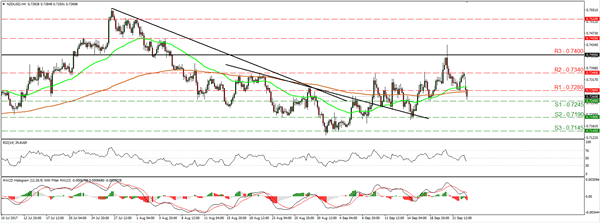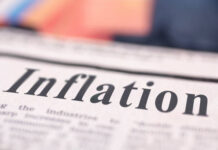In Germany, Angela Merkel won a fourth term as Chancellor. However, her party (CDU) did worse than most opinion polls suggested. The pro-EU SPD, Germany’s second largest party, also gained less seats than anticipated. Critically, the SPD ruled out another ‘Grand coalition’ with Merkel’s CDU immediately after the election. This suggests that Merkel will most likely have to form a coalition that includes the liberal FDP, which is against vital EU reforms such as a euro-budget, or any other form of risk-sharing across EU countries.
In our view, this outcome lowers the likelihood that EU reforms materialize, as any coalition government that includes the FDP will probably have reservations against deeper EU integration. The common currency opened with a modest negative gap, though it quickly recovered most of its losses in the next hours.
Even if the EUR remains under some pressure over the next days, considering the elevated speculation that the ECB is set to unveil a QE-exit plan next month, we doubt that any retracement in EUR pairs will be major or prolonged. The argument for a near-term correction lower in EUR/USD in particular is supported by the prospect of a small recovery in USD, as the Trump administration is expected to reveal an outline of its highly-anticipated tax plan this week.
EUR/USD opened with a negative gap, but the rate hit support near the 1.1890 (S1) level and the medium-term uptrend line taken from the low of the 17th of April, and then it rebounded. As long as the rate continues to trade above that trend line, the medium-term outlook remains somewhat positive. At the time of writing, the pair is testing the 1.1940 (R1) line, where an upside break may open the way for another test near the 1.2025 (R2) hurdle. Having said that, given that we have negative divergence between both our short-term oscillators and the price action, we would stay careful of a possible downside correction. A clear dip below 1.1830 (S2) may be the trigger for something like that and could initially aim for our next support of 1.1775 (S3).
NZD drops as political uncertainty mounts
In New Zealand, the incumbent National Party won the most seats as per the consensus, but fell short of establishing a majority in order to govern alone. At this point, it appears that the Nationals may have to form a coalition with the populist New Zealand First Party, which is anti-immigration and wants to renegotiate free trade deals. Adding to the uncertainty, is the fact that even though the Nationals gained the biggest percentage with 46% against Labor’s 36%, a Labor – New Zealand First – Greens coalition could still be the next government if those parties manage to strike an accord.
The Kiwi opened with a negative gap and may remain under selling interest for a while on this uncertain outcome. The next possible market mover for the currency may be the RBNZ gathering during the Asian morning Thursday. Given the lack of major developments since the last meeting, we look for the Bank to remain on hold and keep its language broadly unchanged. Another round of concerns over the exchange rate could add more fuel to the NZD’s pullback.
NZD/USD gapped down in the aftermath of New Zealand’s election. The pair tumbled after it found resistance at the strong barrier of 0.7340 (R2), it fell below the support (now turned into resistance) of 0.7280 (R1), and hit support near 0.7245 (S1). Taking into account the election outcome and the rejection from above 0.7400 (R3) on Wednesday, we believe that the pair is poised to continue trading south. A decisive dip below 0.7245 (S1) could set the stage for more bearish extensions, perhaps towards our next support of 0.7190 (S2).
Today’s highlights:
The economic calendar is relatively light, as we only get Germany’s Ifo survey for September. That said, we have a plethora of speakers on the agenda. During the European day, we will hear from ECB President Draghi, Vice President Constancio, as well as Executive Board members Mersh and Coeure.
Market focus may be on any hints as to whether the ECB is headed for a ‘dovish tapering’. Over in the US, New York Fed President William Dudley and Chicago Fed President Charles Evans are due to deliver remarks.
As for the rest of the week:
On Tuesday, we have no major events. On Wednesday, we get US durable goods orders for August, while on Thursday, during the Asian morning, the RBNZ will announce its rate decision as we noted above. During the European day, Germany’s preliminary CPI data for September are due out. Finally on
Friday, we get Japan’s CPIs for August, Eurozone’s preliminary CPIs for September, as well as US personal income and spending for August.
EUR/USD

Support: 1.1890 (S1), 1.1830 (S2), 1.1775 (S3)
Resistance: 1.1940 (R1), 1.2025 (R2), 1.2100 (R3)
NZD/USD

Support: 0.7245 (S1), 0.7190 (S2), 0.7145 (S3)
Resistance: 0.7280 (R1), 0.7340 (R2), 0.7400 (R3)












